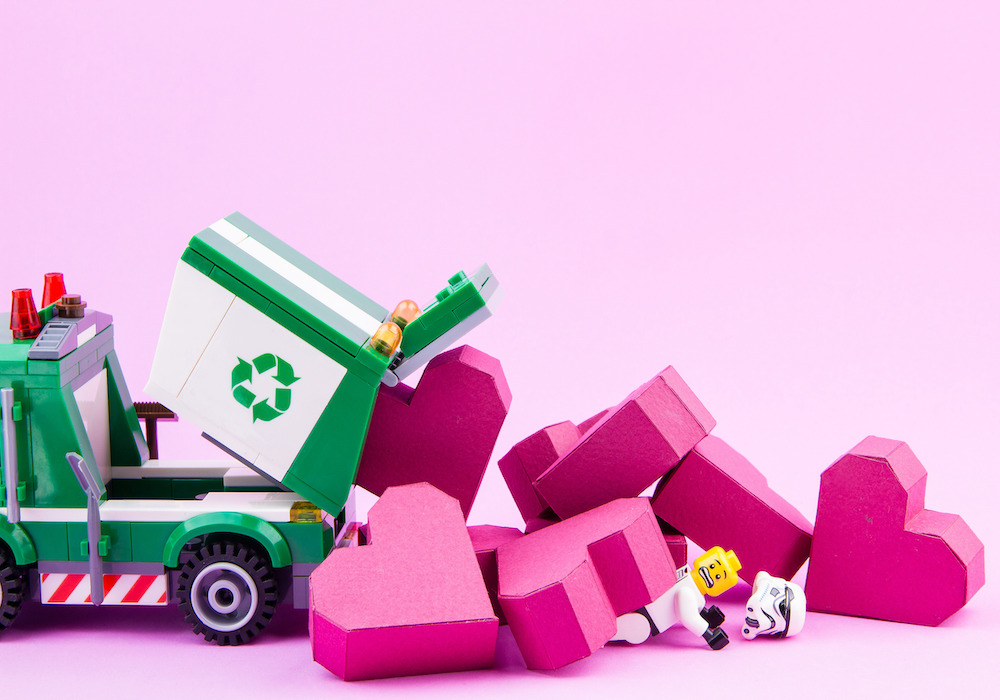Like a lot of companies, Lego’s entire business model has been built on plastic. One hundred thousand tonnes of virgin plastic a year, to be precise. Then in 2021, the Danish toymaker unveiled a prototype brick made from recycled water bottles. It had taken 150 materials scientists and engineers three years of testing more than 250 plastic formulations to land on the “breakthrough.”
The prototype was heralded as a victory on the road to breaking our collective addiction to the fossil-fuel-based material, at a moment when hundreds of companies were tripping over themselves pledging to chop their virgin plastic use.
Then Lego confessed it had hit a wall. Last month, the company said its big plan to go all-in on recycled bricks by 2030 would have made Lego Group’s carbon footprint worse when it’s trying to reduce carbon emissions by 37% by 2032.
Tim Brooks, Lego’s head of sustainability, told the Financial Times in September that the recycled plastic was softer and needed more energy to process it. “It’s like trying to make a bike out of wood rather than steel,” he said. “In order to scale production [of recycled PET, or polyethylene terephthalate], the level of disruption to the manufacturing environment was such that we needed to change everything in our factories. After all that, the carbon footprint would have been higher. It was disappointing.”
Industry observers are wondering if Lego is tackling its sustainability targets all wrong.
“Many had high hopes that Lego was setting a positive example by actively taking steps for the sustainability of plastics,” says Tiz Mekonnen, with the University of Waterloo’s Institute for Polymer Research. “Sustainability in plastic production extends beyond carbon emissions. Reusing PET plastic waste for products could address pressing waste-management issues while simultaneously reducing reliance on virgin and petrochemical plastics for Lego parts.”
To be sure, emissions from the plastic industry are a massive problem. The Organisation for Economic Co-operation and Development says that plastics generated 1.8 billion tonnes of greenhouse gas emissions – or 3.4% of global emissions – in 2019. By 2060, emissions from the plastics life cycle are on track to more than double.
And plastic-recycling infrastructure has been a hot mess for years. Ever since China banned imports of most plastic waste in 2017, recyclers across North America and Europe have been scrambling for solutions. At this point, just 9% of Canada’s plastic is recycled. That stat isn’t much better in Lego’s home base of Denmark, where most plastics are incinerated.
Like Lego, a lot of private sector players are “hesitant to invest in new facilities and long-term, impactful research, prioritizing short-term profitability for their shareholders instead,” says Mekonnen, who suggests mandating recycled content as one solution.
Other major consumer brands such as Nestlé have said that recycled-content targets have been hampered by “a lack of government recycling infrastructure globally,” as Reuters reported.
Lego might shave emissions down a notch with plans to add solar panels to factories in China, Hungary, Mexico, Vietnam and the United States, where grids are often far from clean. But Lego Group operations only account for 2% of total emissions. The remaining 98% come from their scope 3 emissions – from the production of raw materials, distribution and transportation and the treatment of Lego products when they’re no longer wanted.
Hamish van der Ven is an associate professor of sustainable business management of natural resources at the University of British Columbia. He says Lego is too narrowly focused on addressing production instead of consumption. “Instead of making Lego moderately less carbon intensive, why not focus on reducing the need for new production through innovative sales strategies like renting Lego instead of buying it?”
van der Ven notes that plastic alternatives always come with downsides and additional cost (think paper straws). “Ending fossil fuel subsidies would be a good way to reduce the price difference between plastics and plastic alternatives while funding both infrastructure and research.”
Lego’s sustainability chief has acknowledged that “it’s better to reuse than recycle.” He said the company plans to expand its Lego Replay program, which donates used bricks to children’s non-profits. But Lego, like other companies trying to green themselves, will need to go beyond feel-good pilot programs. “We’re looking at a circular business model — how do we earn revenue from recircling bricks. It’s quite a shift in thinking and ideas,” said Brooks.
Greenpeace Canada’s head of oceans and plastic campaigns, Sarah King, is glad to see Lego talking circular. But, she says, “unless they begin to reduce production overall, their model does not lend itself to circularity . . . A continued reliance on fossil fuels for its products is not compatible with a sustainable or just transition for the business or the wider economy.”
The toymaker has clarified that it’s still “fully committed to making Lego bricks from sustainable materials by 2032,” adding that the company will “triple spending on sustainability initiatives to $1.4 billion in the four years to 2025.”
Environmental advocates will be watching closely to see whether Lego’s definition of sustainability stacks up.







